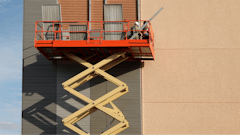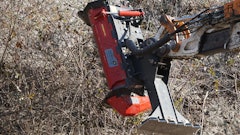
For any equipment rental company, tracking assets is critical to properly managing inventory levels and transactions. But many firms rely on outdated, error-prone systems that drive up labor costs and collect data using unreliable methods. In this post, we take a look at how RFID can help.
Companies that rent out high-value equipment have always needed a reliable way to track and manage both customer and item information. The problem is, for many firms, “reliable equipment tracking” means identifying and recording serial numbers and item descriptions by hand. This is labor intensive and produces data that has many inaccuracies due to human error.
Barcode systems, which have also grown popular in recent years, offer an improvement over manual methods. But they’re still limited by line of sight requirements, one-at-a-time scanning, and labels that can easily get damaged or go missing.
Struggles like these are the reason more firms are turning to RFID for rental asset tracking. But rental equipment comes in a wide range of configurations, making tag selection and mounting more complex than industries with more uniform assets. Still, an RFID system offers big benefits for equipment rental companies when properly deployed. Let’s take a look at the top five benefits of RFID for rental companies.
Automates Transactions
The process of assembling rental kits and getting them through the door can be very labor intensive. You have to locate the assets you need in your facility and record them as you add them to the kit.
Older methods make the data recording task in this step more difficult than it needs to be. The item, many of which are large and unwieldy, must be manipulated so that the serial tag can be read, either by an operator or a barcode reader.
In contrast, RFID enables you to identify assets at a distance, automating and speeding transactions. To locate an asset, you just walk down the aisle with the RFID reader and pick up the inventory. Then, to check it out of your system, individual and batched items can be read by one person using a handheld RFID scanner or portal with fixed antennae. The system automatically reads the item’s serial number, identifies it and logs it as being checked out.
By automating transactions, RFID reduces the amount of time and labor necessary to get the assets into your customers’ hands.
Increases Kit Accuracy
Delivering kits containing the right assets (and the right number of assets) is critical. But when kits contain hundreds or thousands of assets, it’s difficult to ensure accuracy when your tracking system is based on manual or even barcode solutions.
One common problem occurs when you have similar-looking assets that operate differently. For example, coiled cable assemblies look very similar. Different lengths, different connectors, and different numbers of conductors may look the same, but are not at all interchangeable. If you’re assembling kits manually—identifying items by sight—it is easy to mix up items like this.
RFID provides a fast and accurate way to make sure the right assets (and right quantities) make it into each kit. With a reader, you can identify a tagged asset in seconds and ensure you’re supplying the correct item.
Improves Inventory Management and Utilization
Inventory visibility is an essential tool for asset rental companies. Only by having accurate inventory data can a rental company determine what assets are available to supply to a customer.
RFID helps you collect high quality data including utilization levels, seasonal usage trends, and common rental time frames. This enables data-driven decisions to be made – like which asset mix will best serve a given customer’s need. It also prevents valuable capital from being dedicated to assets that do not reliably produce revenue.
Streamlines Equipment Returns
For equipment rental companies, few things are more important than getting rented assets back. RFID provides a fast, scalable way to confirm that the items you rent out get returned.
Utilizing RFID software to manage your inventory ensures accurate renter and item identification every time an asset hits your warehouse floor or staging area. Because RFID-based check in and check out processes are highly accurate and asset–customer associations are established automatically, customers can be more easily held accountable when assets are damaged or not correctly returned.
This is one of the reasons RFID often pays for itself in the form of loss and theft prevention.
Automates Cycle Counts
Cycle counts are a critical part of managing rental asset inventory. But manually counting serialized items is extremely time-consuming. When using barcodes or pen and paper, this usually involves a person handling every asset in the warehouse and then reading and recording the serial number.
These processes often lead to low quality data. When you have someone using a clipboard and writing serial numbers down, there’s a chance for errors in data. Barcodes are slightly better, but there’s still opportunity for error.
In addition to being error-prone, auditing thousands of assets this way creates a huge demand for labor. This takes up countless hours of time and drives up costs while providing no benefit to customers.
RFID uses automation to drastically cut down on unproductive man-hours dedicated to warehouse cycle counts while vastly improving the quality of the data. This also allows cycle counts to be done quickly, inexpensively, and more often, so warehouse inventory can be kept current at a low cost. Now, someone can walk through the warehouse with an RFID reader and gather info on hundreds of assets in seconds.
In conclusion, RFID provides an automated and far more reliable way to track rental assets. Using it can help equipment rental companies collect better data, reduce labor costs, and streamline their workflows.






























